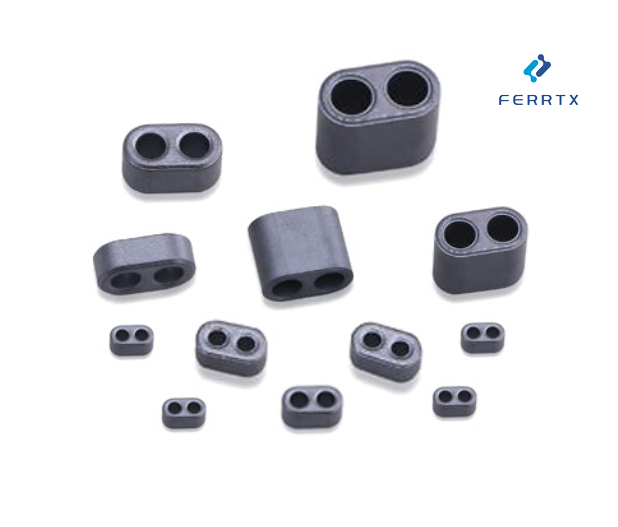
Privacy statement: Your privacy is very important to Us. Our company promises not to disclose your personal information to any external company with out your explicit permission.
Brand: FERRTX
Transportation: Ocean,Land,Air,Express
Place of Origin: China
Supply Ability: 2~8weeks
Certificate: RoHS/ISO/UL/CE/IATF16949/CNAS
Port: Xi'an,Shanghai
Payment Type: L/C,T/T
RID Family – High-Performance Through-Hole EMI Filter Beads with Dual Aperture Cores
Through-hole ferrite bead EMI filters are essential components for suppressing electromagnetic interference (EMI) in modern electronic systems. The RID family of double-aperture core EMI filter beads is engineered to provide superior noise attenuation across a broad frequency spectrum while maintaining compact form factors ideal for high-density PCB layouts.

When current flows through the through-hole EMI filter bead, the Ferrite Core generates a magnetic field that induces energy dissipation—especially at high-frequency signals. This frequency-dependent impedance characteristic allows these passive components to act like resistors within targeted bands, effectively attenuating unwanted electromagnetic noise without affecting DC or low-frequency signal integrity. Unlike capacitive or inductive filters, ferrite bead EMI solutions offer broadband suppression without introducing phase shifts or resonance issues common in LC networks.
Choosing the right through-hole EMI filter bead requires careful attention to three critical parameters:
| Series | A | B | C |
| RID | 2.01–7.5 Ω | 3.2–7.0 Ω | 2.0–13.3 Ω |
These dual-aperture Ferrite Beads are widely used in applications requiring robust electromagnetic compatibility (EMC), such as:
Engineers across Europe, North America, and Southeast Asia have praised the RID series for its consistent performance under thermal stress and mechanical vibration. Users report improved EMC test pass rates when replacing generic beads with these precision-engineered through-hole EMI filter beads. Many cite the ease of soldering and reliability in high-volume manufacturing processes as key advantages over competing products.
What makes a through-hole EMI filter bead different from a surface-mount version?
Through-hole variants offer higher current capacity, better mechanical stability, and easier manual assembly in prototyping stages—ideal for ruggedized or legacy designs.
Can I use this bead for both DC and AC lines?
Yes, but ensure the rated current exceeds the maximum expected load. These beads function equally well on signal lines, power rails, and ground connections.
Why choose double-aperture cores over single-core designs?
Double apertures improve magnetic coupling efficiency, enhance flux containment, and reduce stray inductance—resulting in more predictable and repeatable EMI suppression behavior.
Is it necessary to match impedance exactly?
While not mandatory, selecting a bead whose peak impedance aligns closely with your primary noise source ensures optimal attenuation. Mismatched impedances may lead to ineffective filtering or unintended resonances.
The file is encrypted. Please fill in the following information to continue accessing it


Privacy statement: Your privacy is very important to Us. Our company promises not to disclose your personal information to any external company with out your explicit permission.

Fill in more information so that we can get in touch with you faster
Privacy statement: Your privacy is very important to Us. Our company promises not to disclose your personal information to any external company with out your explicit permission.